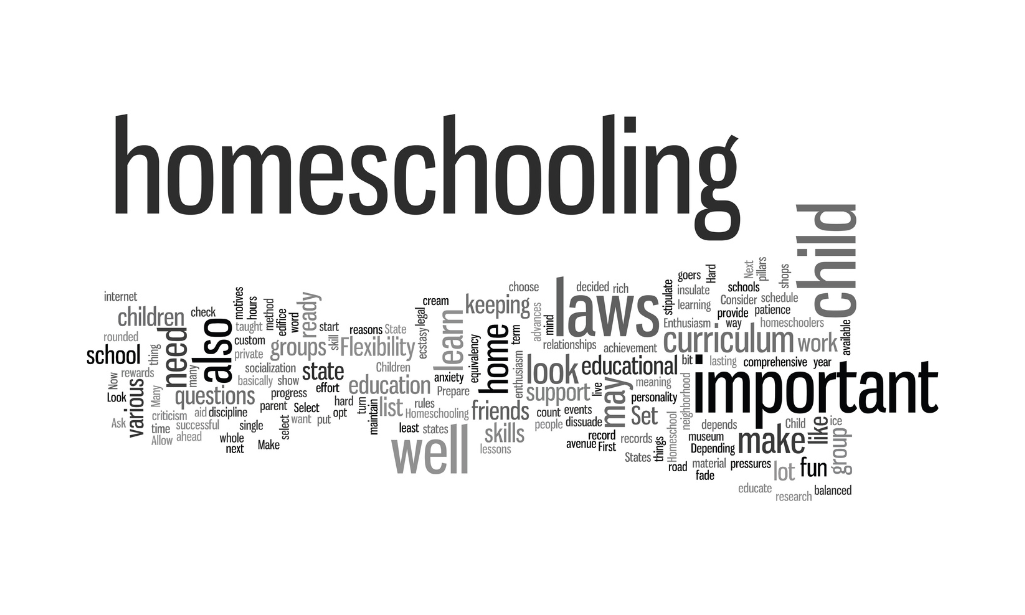So, you have decided to homeschool. Unless you have been around the homeschooling block a few times or are surrounded by homeschooling friends, you may be wondering, now what? There are so many things to consider and choices to make, from curriculum to classes to co-ops.
If you are new to homeschooling, you are most likely a bit overwhelmed and maybe even tempted to throw in the towel before you even get started. But homeschooling will be the best decision you make for your children’s education and future, and you can do it!
This three-part blog series will help you, well, figure out how to homeschool! That involves answering questions along the way, such as:
- How does homeschooling work?
- How do I homeschool my kids?
- What are the benefits of homeschooling?
In Part 1, we discussed how homeschooling works, including various forms and styles of homeschooling. In Part 2, we’ll answer the question, “How do I homeschool my kids?”
This is a complex question with a variety of answers A good place to start is by knowing yourself and what kind of homeschool teacher you want to be. By answering the questions below, you’ll begin to reach some clarity regarding the type of homeschool teacher you wish to be and how you can homeschool your kids. From there, this can help you identify the curriculum and homeschool activities that suit you and your child best.
Do you want to be highly involved in each lesson? Or more hands-off?

If you want to be highly involved, consider the traditional homeschool approach and curriculum. With this approach, you manage all the details of your child’s day and projects. However, if you prefer to be more of a hands-off teacher, you will want to look for an online program, live classes, or self-paced publishers that allow your child to work more independently. There is no right or wrong way to go–it simply comes down to what is most comfortable and natural for you and your student.
Do you thrive on a tight, organized schedule or a more relaxed day?
If you are a type A personality who benefits from a tighter schedule, consider homeschool curriculum that is paced for you. Just be sure that you take some time to write out your lessons and schedules in advance. It’s also a good idea to invest in a great homeschool schedule or calendar. If you want a more relaxed schedule, start by making a list of what you want to accomplish and the courses you want to teach. From there, search for curriculum and class options that will provide you with the freedom and flexibility you want.
Do you want to homeschool individually, as a group, or both?

Most homeschooling curriculum allows you to teach concurrently, with more than one student at a time, or separately. Maybe you want to spend time exploring science together but work with each student separately on language arts. Perhaps journaling and reading can be a group activity, where you read, write, and share what you’re learning together. It is important to decide how much togetherness and how much separation you want in your homeschool day.
Do you want traditional books and curriculum, online classes, or a blend of both?

If you have a book lover in your home, you will definitely want to consider traditional textbook language arts and other curriculums. But online learning is also a wonderful supplement to textbook learning, as the visual integration mixed with audio and instant feedback are great for all learning styles. If your child has grown more accustomed to asynchronous online learning, a virtual classroom environment, or both, perhaps blended homeschooling, exclusively online learning, or a day full of live online classes works best for your child.
Do you want to go it alone or teach in a community?

If you have highly social children or are new to homeschooling altogether, planning a few outside classes and activities, such as PE, art, or a co-op science class can give you the break you need and provide your students with the engagement and socialization they crave. Co-ops have become more and more popular in homeschooling circles for all of the reasons above…and then some. Similarly, microschools and pods, many of which began during COVID, continue to grow. These aren’t for everyone, however. Some children are easily distracted in group settings, which isn’t exactly conducive to learning. So, it’s ultimately up to you whether you want to go it alone or join forces with other homeschooling families.
The next article in this series will discuss the benefits of homeschooling. Here’s a hint: there are many!
How do you homeschool your kids? Share in the comments below!








